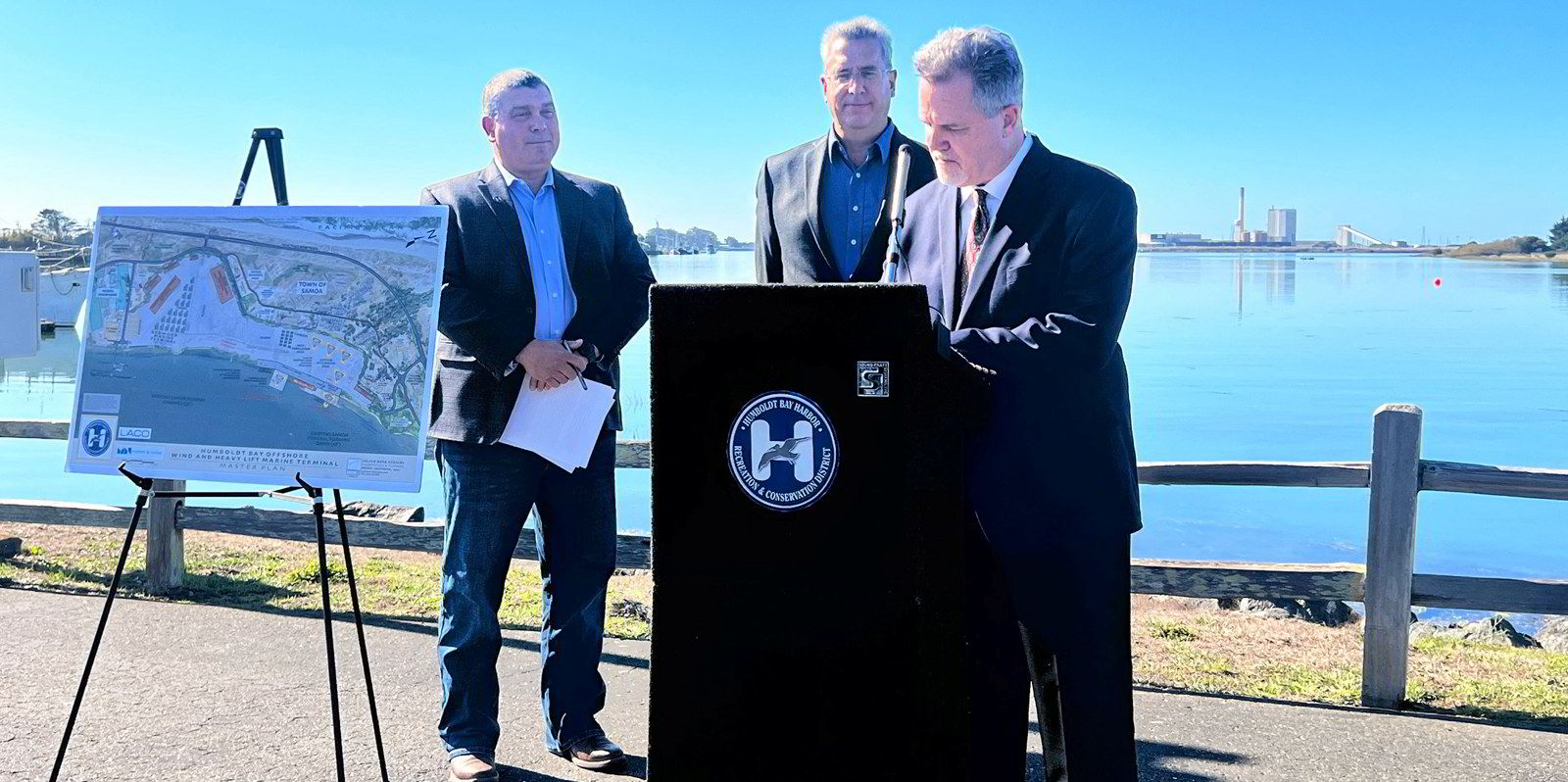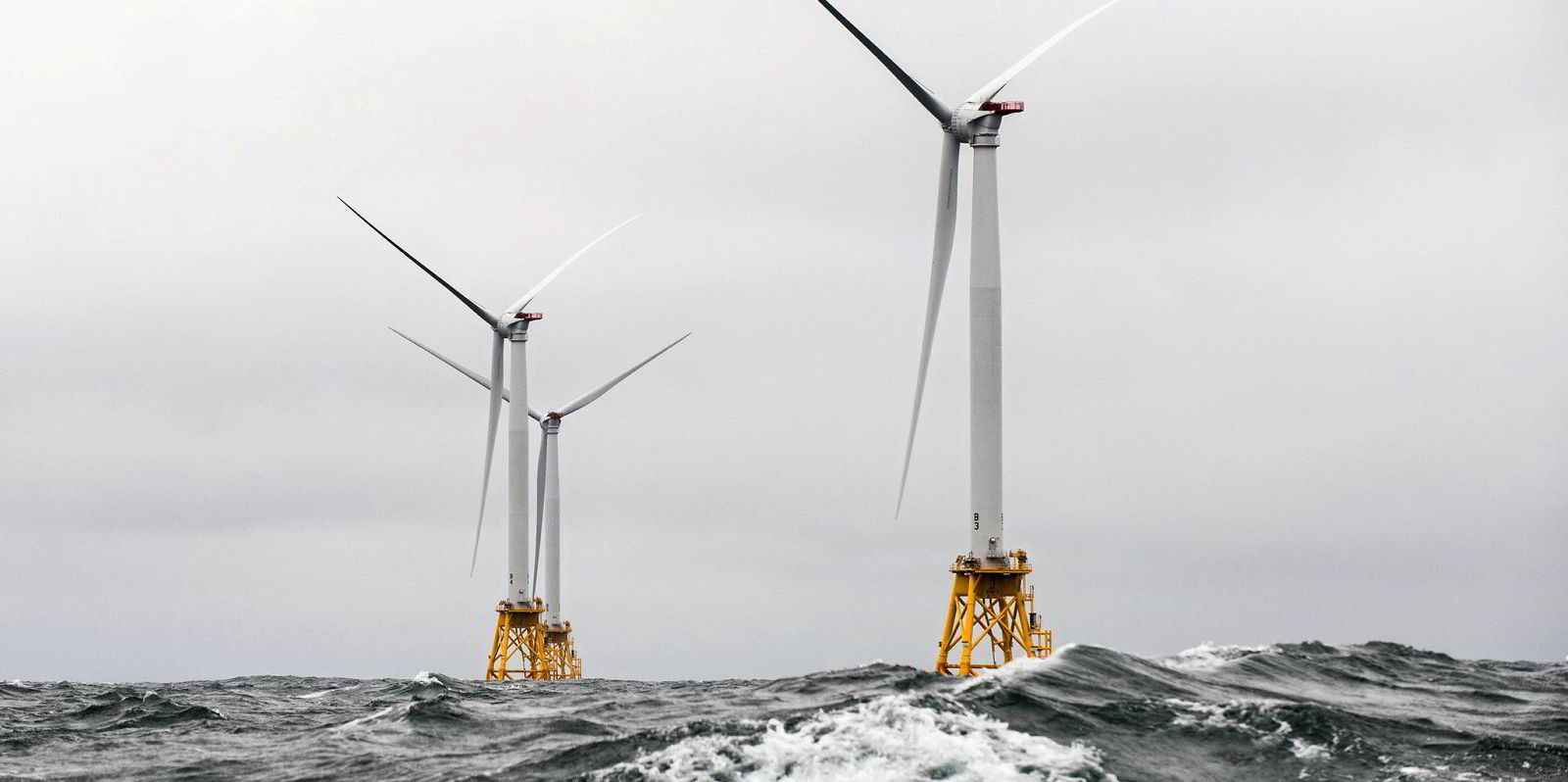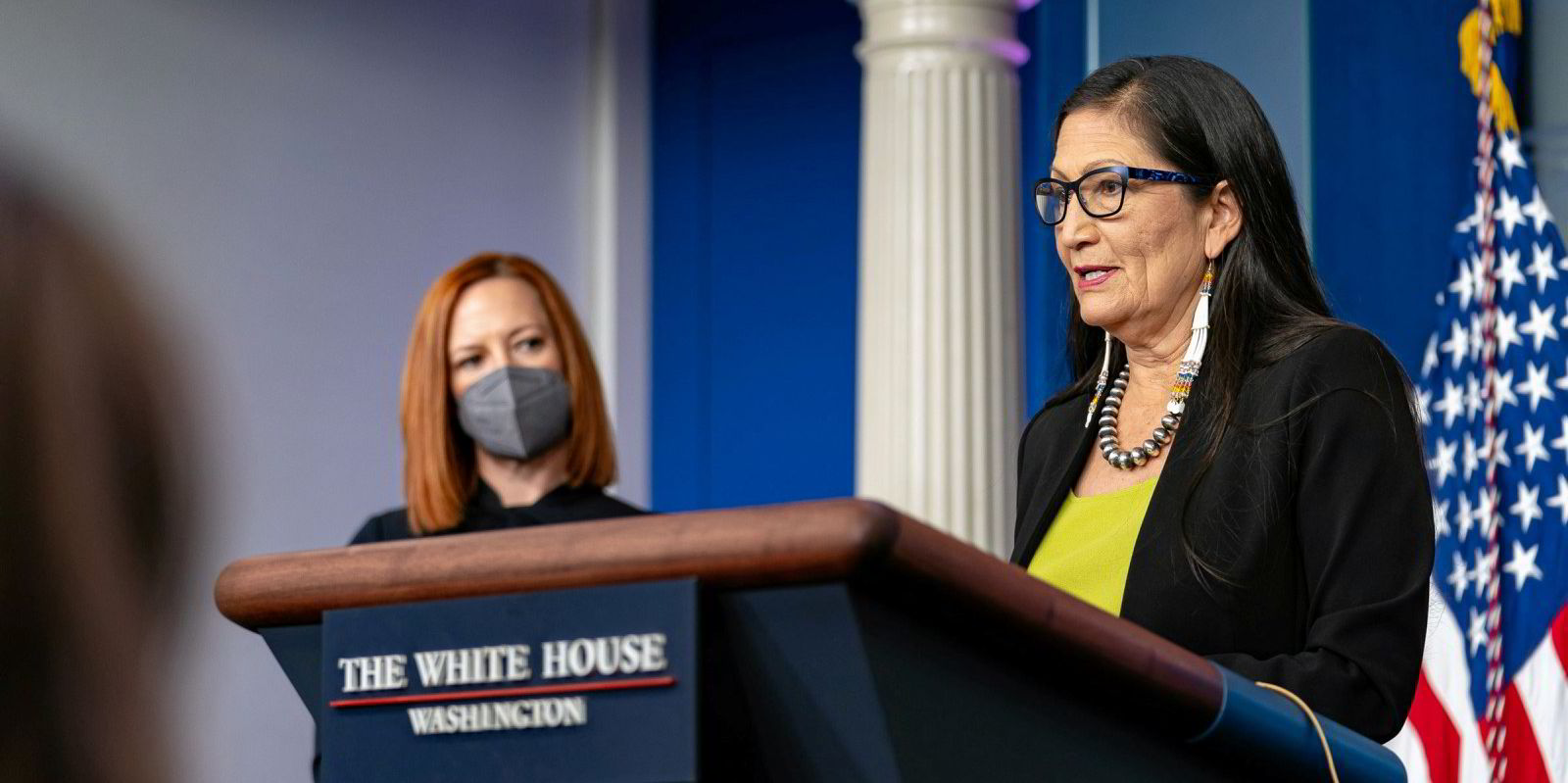Eureka took its name from the exclamation that prospectors made upon discovery of gold, as the town played a role as a shipping hub when Northern California was a hot spot for mining the commodity in the 1800s.
Fast forward to 2022, and local officials were meeting to consider a deal aimed at positioning the city as a port for another potentially lucrative commodity: offshore wind.
Larry Oetker, executive director of the Humboldt Bay Harbor, Recreation and Conservation District, addressed the port authority’s commissioners to explain why it was about to sign an agreement with Crowley Wind Services that would launch exclusive negotiations to develop a terminal to serve the offshore wind industry.
US interior secretary Deb Haaland had announced on 18 October that about two months later the federal government would auction offshore wind leases off California, with three of the five areas in Humboldt Bay, just miles off Eureka’s coast, less than two months later.
“That has basically created a flurry of activity within the offshore wind industry to really focus on the port of Humboldt Bay,” Oetker said, according to an audio recording of the meeting.
That flurry is seen in the groundswell of interest in the five leases, two of which are in southern California’s Morro Bay.
California is aiming to have up to 5 GW of offshore wind capacity by 2030, as US President Joe Biden targets 30 GW by the same time frame. The state is also gunning for 25 GW by 2045.
Recharge, our sibling news service covering the renewables sector, has reported that 43 developer consortia have lined up to participate in the bidding for what could become 4.5 GW in generation capacity. That is more than double the players in the last big offshore wind auction off New York.
There’s gold in them there winds
Tim Ferry, Recharge’s US offshore wind editor, said the areas off northern California see wind blowing at 10 metres per second compared to just eight or nine off Massachusetts, where offshore wind development is further along.
“It’s a huge opportunity. The resources are great,” he said of California. “But there are a number of challenges facing the state as it goes forward, and facing the country.”

Those challenges include deep water, which means that, unlike the US East Coast, offshore wind off California will involve floating turbines. Rough seas make installation challenging, and Ferry said there are looming question marks over offtake and transmission.
Another major challenge is a shortage of ports to serve the offshore wind sector.
That brings us back to Humboldt Bay.
As TradeWinds has reported, the wind services unit of Florida maritime company Crowley is aiming to build the Humboldt Bay Offshore Wind Heavy Lift Marine Terminal at the site of a shuttered lumber mill and old dock.

Jeff Andreini, the vice president of Crowley Wind Services, said the company has ports at the centre of its strategic vision for serving the offshore wind sector, because they are the nexus for the supply chain that is required to build and run the facilities.
The company, which is developing another terminal in Massachusetts, has been in talks with the Humboldt Bay port district for more than 18 months.
“I remember the first time that I went there,” he told me. “I said, ‘If we can get this, it’s the crown jewel of anything that we will do in the United States’.”
That is because the US West Coast — with its combination of craggy cliffs, protected shorelines and packed-to-the-gill existing ports — suffers from a lack of suitable sites for new terminals. There are just four possibilities, one whose port authority is uninterested at the moment, another with height restrictions and a third with ageing nuclear reactors in the way whose lives were recently extended.
That means Crowley’s proposed terminal would not just serve the offshore wind farms in nearby Humboldt Bay. It would be in a position to serve projects down in southern California, including Morro Bay, and up to the state of Washington.

And California needs more than ports. The offshore wind sector will need tugs, barges, anchor-handling vessels and other assets that meet the stringent standards that are going to be required to serve the wind farms, including alternative fuels systems and engine efficiency requirements.
But Andreini said Crowley’s foothold in Humboldt Bay remains the most important opportunity that the company has secured yet.
“California is going to be huge in this market,” he said. “Their aspirations are the same as the nation’s aspirations.”
_______________
More on the environment and the business of the ocean
Highlights from the Offshore Wind Vessel Business Focus
TradeWinds’ reporters have taken a deep dive into the offshore wind vessel sector, where Paul Peachey has found that rising markets are teeing up tougher competition between the renewables and fossil fuels industries over ships that can serve both sectors.
“It’s all to play for,” Marocean’s Michael Jones said.
Meanwhile, TradeWinds correspondent Adam Corbett reports that Japan’s national offshore wind farm project development is picking up pace as the country races towards its target of installing 30 GW to 45 GW of offshore wind power by 2040.
The country is coming late to the party and has been leaning heavily on technical and commercial experience from abroad, but local alliances are also being forged as Japan builds up its offshore renewable energy capability.
Click here to read the full report.
_______________
Investors need to push shipping to ‘take ambitious action now’ on carbon
Investors should call on shipping and its customers to slash operational carbon emissions, the Environmental Defense Fund and Maersk Mc-Kinney Moller Center for Zero Carbon Shipping contend in a joint report.
The conclusions of the report, which lays out a series of asks that shareholders should make of maritime transportation providers and users, also urge the industry to go further on carbon emissions disclosures than international accounting standards require.
The call by the Environmental Defense Fund and the Copenhagen-based Moller Center come as larger corporates are facing increasing pressure from shareholders to decarbonise — a trend that has yet to find its way into shipping, at least in a significantly public way.
The urgency of the transition requires that investors push the industry to take ambitious action now, in order to reduce operational emissions and accelerate the adoption curve for low-carbon fuels by the end of this decade,” the two non-profit groups said in the report.
_______________
A $3bn ‘endorsement’ for methanol as a shipping fuel
Behemoth China Cosco Shipping has placed a $2.89bn bet on methanol fuelling, with an order for 12 giant container ships at two yards within its umbrella.
The company’s Cosco Shipping Holdings unit said its Orient Overseas Container Line (OOCL) and Cosco Shipping Lines have placed orders for a dozen 24,000-teu ships.
The two liner companies signed deals at two Chinese yards that are joint ventures between the Cosco group and Japan’s Kawasaki Heavy Industries.




